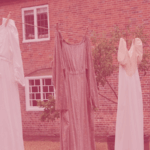The famous Irish-American Gilded Age police detective Thomas Byrnes, who in 1880 (thanks to his solving the Manhattan Savings Bank Robbery in 1878), was appointed to the Chief of New York’s Detective Bureau. During his fifteen-year tenure, he became famous for staging elaborate, and often violent, scenes to extract confessions from suspects. In his 1901 book The Making of an American, muckraker Jacob Riis described Byrnes’s infamous practices as twofold: providing blunt and relentless violence to petty criminals, or theatrical games for the “men with minds” who were brought in for interrogation about grislier crimes. Riis writes of a criminal confession in which Byrnes “had him” [the suspect] “brought up” [to the station house],
“through a tortuous way, where the tools he had used in murdering his partner were displayed on the walls as if by accident. Led into the Inspector’s presence by the jailer, he was made to stand while Byrnes finished a letter. Then he turned his piercing glance upon him with a gesture to sit. The murderer sank trembling upon a lounge, the only piece of furniture in the room, and sprang to his feet with a shriek the next instant: it was the one upon which he had slaughtered his friend, all blood-bespattered as then. He sprawled upon the floor, a gibbering, horror-stricken wretch, and confessed his sin.”
Byrnes employed savagely creative staging and scripts (including, simply, lying—Riis relates a Prisoner’s Dilemma-style scene in which Byrnes tells a criminal that his accomplices have ratted him out) to name murderers and close cases. With this, he performs his office as one simultaneously of judgement and knowledge, and therefore, exaggerated psychological power—altering not only the cultural idea of the detective (from a guard on the streets to a mind-reader), but the entire peacekeeping process. Byrnes sought to create a persona who seemed to be able to visualize the unconscious minds of criminals—attempting to become, in the minds of his subjects, a powerful force able to anticipate and access concealed truths that would otherwise be contingent on the discovery of clues. And his own physical audiences (criminals and fellow officers), as well as the readers of their exploits (thanks to the publications of their methods, and their corresponding celebrity statuses), allowed him to inhabit and develop this augmented power.
Despite his performative operations, Byrnes downplayed the extent to which his contrived performances may have linked him to the literary tradition of the performing detective, a tradition which was very apparent to him as such; in his 1910 obituary, he is quoted as previously having said, “The detective of fact owes nothing to the detective of fiction. Take the wonderful disguises of the detectives of fiction. Lecoq and Sherlock Holmes play a score of different roles. There is nothing like that in real detective work.”
“Monsieur Lecoq” was the leading contemporary detective in French literature, created by the journalist Émile Gaboriau in 1866. Based on the stories of Eugène François Vidocq, the criminal-turned-policeman whose memoirs were adapted numerous times, Monsieur Lecoq appeared in five novels and an additional short story until 1876. And, to be fair, the character Sherlock Holmes thought very little of Lecoq, as well—in the inaugural Holmes novella A Study in Scarlet, Watson asks Holmes is he’s a fan of the French detective, to which Holmes groans, “That book made me positively ill…I could have done it” (solved the crime) “in twenty-four hours. Lecoq took six months or so. It might be made a text-book for detectives to teach them what to avoid.”
But Byrnes’s dismissals of disguise and acting as non-constitutive of real-life detective work insists on the subordination of performance to detection, and in a way (inadvertently, on his part) reinforces how they are inextricably linked—Byrnes’s dissociation of his career from fiction is another performance of power, one also forged from pretending. With his statement, Byrnes reasserts that his own hawkish qualities can cause him to tell the difference between fiction or real life. But the fictional detective’s work is also about the reassertion of the cleverness of the detective’s abilities amid clouds of fiction—in that the detective often destroys the fictional conditions which he has used to gather information, to announce his presence as a detective and then solve the crime at hand.
Byrnes’s statement confirms that being a successful “performing detective” principally concerns removing the shrouds of make-believe from his persona while also demonstrating that he can see clearly through the worlds of make-believe around him—which his audience cannot. Rather like Holmes, Byrnes needs to create and then dispel fiction in order to perform a discovery of the truth. Indeed, Jacob Riis muses, “The boys” [police officers] “called him a great faker, but they were hardly just to him in that. I should rather call him a great actor, and without being that no man can be a great detective.”
Riis’s assertion that a great detective first needs to be a great actor offers an insight into the ubiquity of performance as a crimefighting tactic, and links with a real-life tradition of detectives and even police departments embracing acting in the crime-fighting world. In London, many real-life detectives during the Victorian era wore costumes and embedded into crowds, before revealing themselves to be undercover. In an 1868 departmental meeting of the London Metropolitan Police, “disguise” was discussed as a common practice, and its effects were debated. And we know of disguise’s beneficial uses to detectives on the job due to the reminiscences of retired detective-memoirists. For example, in the 1890 autobiography of former Scotland Yard Divisional Detective-Inspector Charles Leach, On Top of the Underworld, he details having to don disguises in order to embed himself better into crowds or trick criminals. Early in his career, his boss asks him, in highly theatrical language, to play “the leading part” in their upcoming sting; “I want you to stand behind the counter in the shop for a day. All you need to complete the disguise is an apron and a pair of spectacles. What about it?” Leach gives in quickly, and has to pretend to be this civilian (observing from the background a meeting between a criminal and his fence) in order to lull criminals into a police trap.
No real-life detective seems to have relished the use of disguise, or offered as much insight into the possible elaborateness of acting and performance employed by the real-life detective, as much as former-Chief Inspector George Littlechild, who devoted an entire chapter in his memoirs to: “How I Have Used Disguise — ‘Makes Up’ That Are Not Often Suspected.” At the start of this chapter, he quickly informs his audience that disguise has been a controversial practice at Scotland Yard, but explains at length how a detective might benefit from performing another identity, and recommends a watered-down brand of method acting, to accomplish this. He frowns upon the uses of “false moustaches and whiskers—at all events in daylight,” but still believes in the power of changed (grown) facial hair in all environments, as well as costume. He lists moments in which detectives he has known have disguised themselves as butchers, curates, and sweeps. He, himself, has been disguised a surveyor, a sanitary inspector, a cabbie, and a shabby Whitechapel resident.
Littlechild, much like Byrnes, was quick to separate his own techniques of performance from the fictional or theatrical worlds; he mentioned, “I do not allude to the ‘make-up’ which belongs to the detective of the stage, whose portraiture is no more true to life than is the caricature the French actor usually presents of John Bull,” suggesting that the fictional detective character, who dons disguises himself, shallowly apes the process. But unlike Byrnes, Littlechild was not worried that the fictional detective character misidentifies the true profession as involving disguises and acting in the first place—Littlechild was concerned that this character dons disguise and enacts performance incorrectly, too obviously and ham-handedly to truly constitute an effective comparison.
Byrnes was less concerned about theoretical approaches to the craft than doing whatever it took to make arrests. In 1882, after receiving permission from the department to expand his power as Chief, he instituted what he referred to as the “Mulberry Street Morning Parade,” which was a round-up of arrested suspects who were then walked in front of police officers, so that the officers might be able to identify anyone who they had seen embroiled in any brouhahas or crimes, the night before. Later, Byrnes would assemble a dossier called Rogues Gallery, featuring his amateur criminal profiling attempts, full of photographs and descriptions of criminals he caught.
Indeed, Byrnes’s reliance on spectacles like “parades,” “galleries,” and elaborate performances seem to have been extensions of his desire for totalized power, rather than a call to the stage—merely another demonstration of unregulated Gilded Age corruption in a high level of government.

















